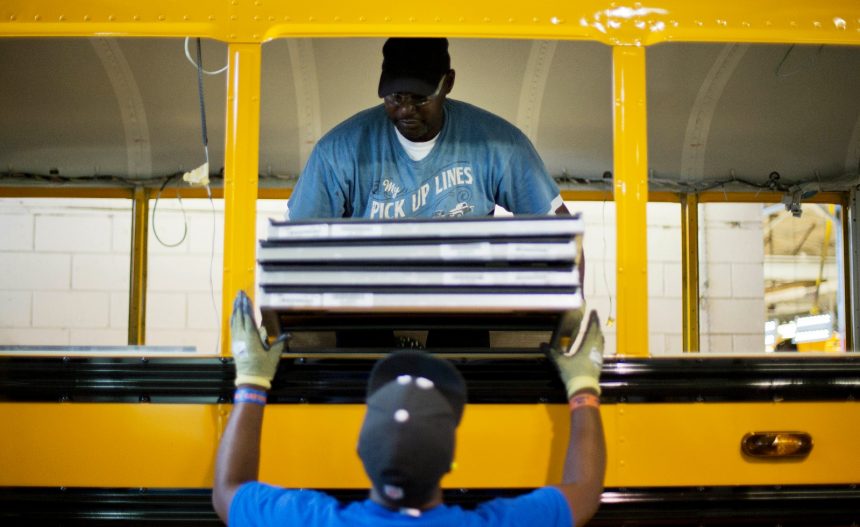For close to a century, a significant number of America’s famous yellow school buses have been produced at a factory in Fort Valley, a small town of 9,000 people surrounded by peach and pecan orchards in central Georgia. Carolyn Allen, who has been with Blue Bird for 13 years, admits that working there was not what she initially planned. She never anticipated working at the factory so close to her home, and she was hesitant due to the history of layoffs. However, circumstances led her to the job, and after facing numerous challenges within the company, she decided to get involved in a union organizing effort a few years back.
After a lengthy organizing process, the factory’s 1,400 employees voted to join the United Steelworkers in May 2023. This landmark decision garnered national attention and even garnered praise from President Biden. The factory was set to receive substantial federal funding to build electric school buses, further highlighting the significance of the unionization. Post the vote, Allen ran for and was elected to represent her coworkers on the union’s bargaining committee.
The contract negotiations were not smooth sailing, with initial setbacks and deteriorating conditions within the plant. However, last month, the workers announced the successful ratification of a new contract that included raises, retirement benefits, and profit-sharing. Allen expresses her amazement at the positive outcomes of the contract and finally sees a bigger purpose in her unexpected career path.
Blue Bird’s unionization and subsequent contract reflect a broader trend in green manufacturing under the Biden administration and its impact on the labor movement. Despite challenges in balancing climate and labor goals, initiatives like the Bipartisan Infrastructure Law have created opportunities for organized labor in green industries. Moreover, government subsidies for electric vehicle production have played a significant role in achieving favorable outcomes in contract negotiations at facilities like Blue Bird.
Overall, the success story at Blue Bird showcases the potential for economic revitalization through strategic partnerships between industry, labor, and government. The collaboration between the union, management, and federal aid in promoting green manufacturing serves as a model for sustainable growth and equitable workforce practices. With a strong contract in place and promising prospects ahead, Blue Bird is emblematic of the evolving landscape of American manufacturing in the era of climate-conscious economic development.





